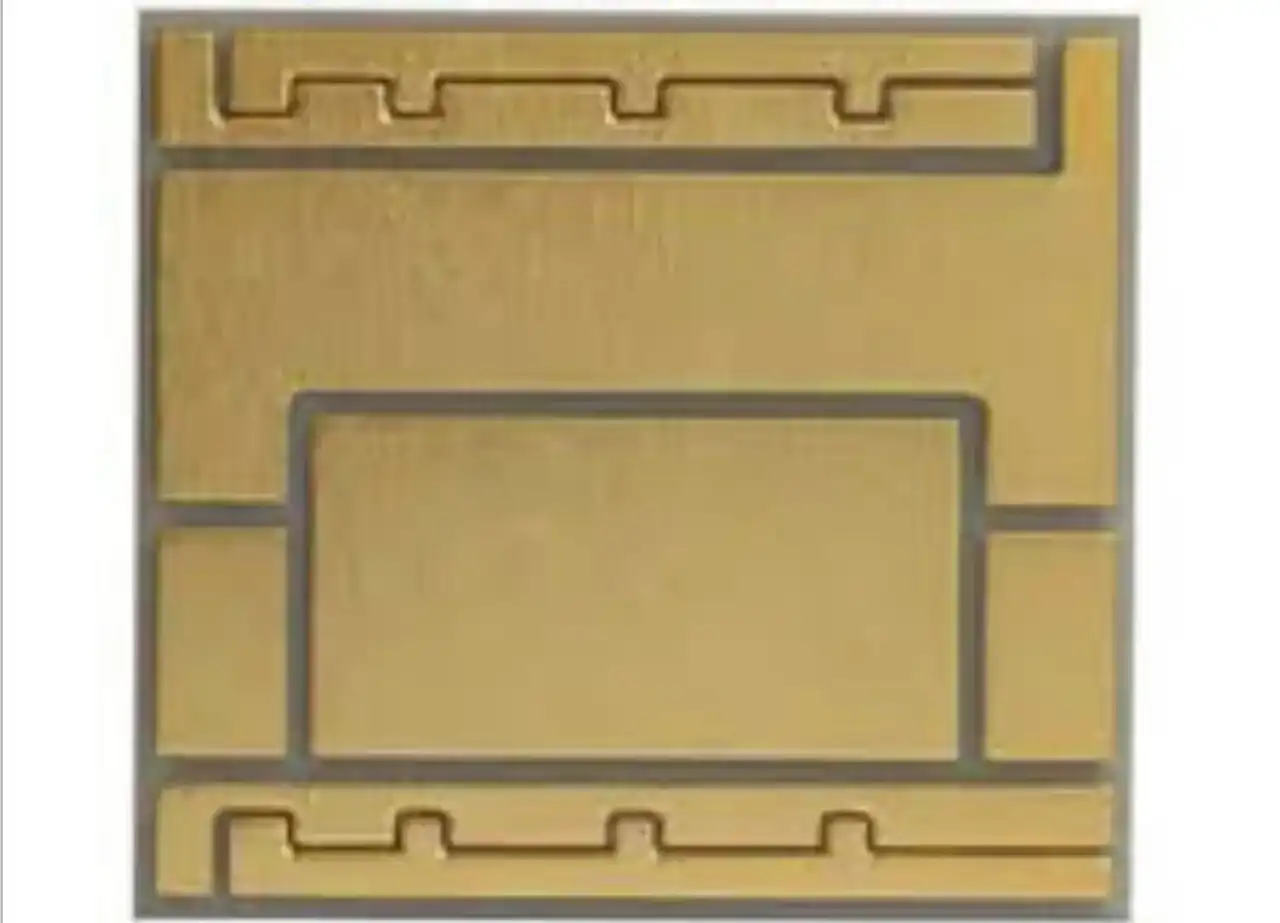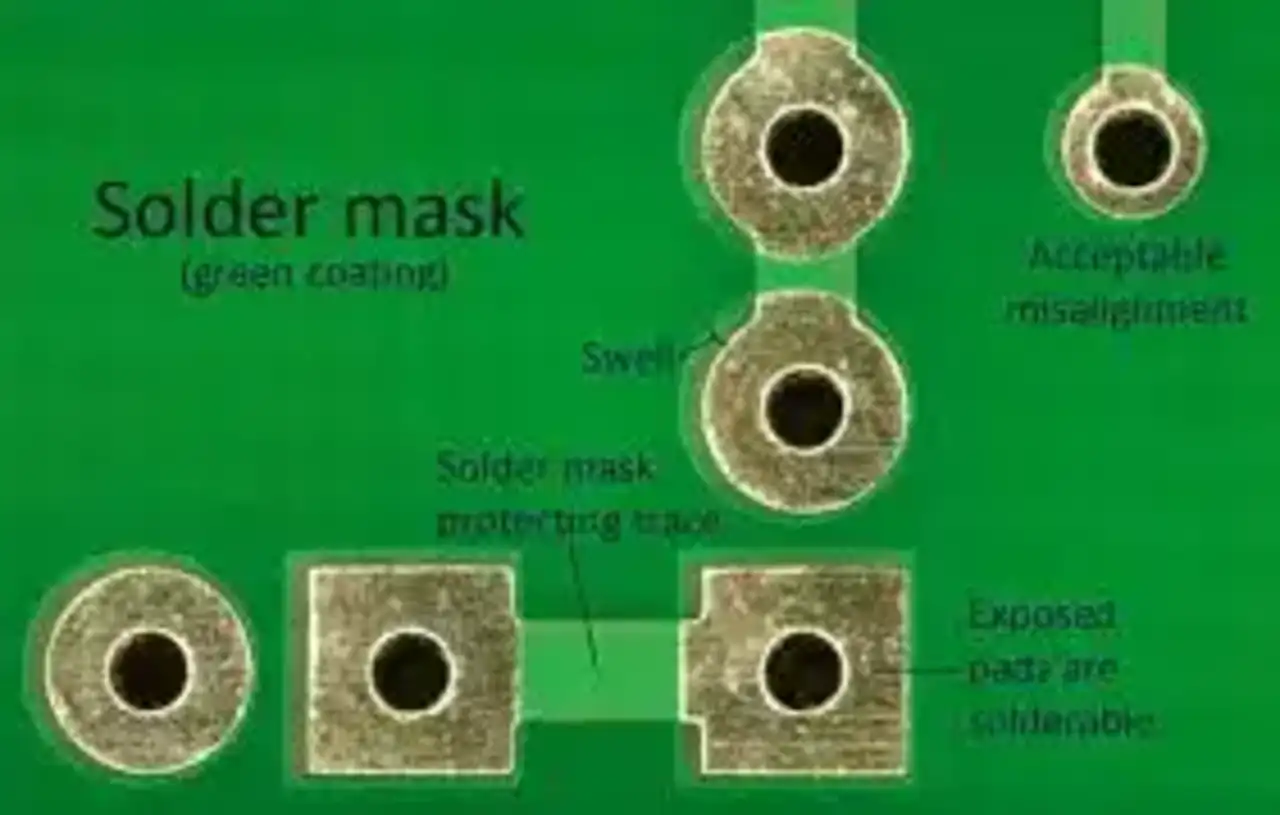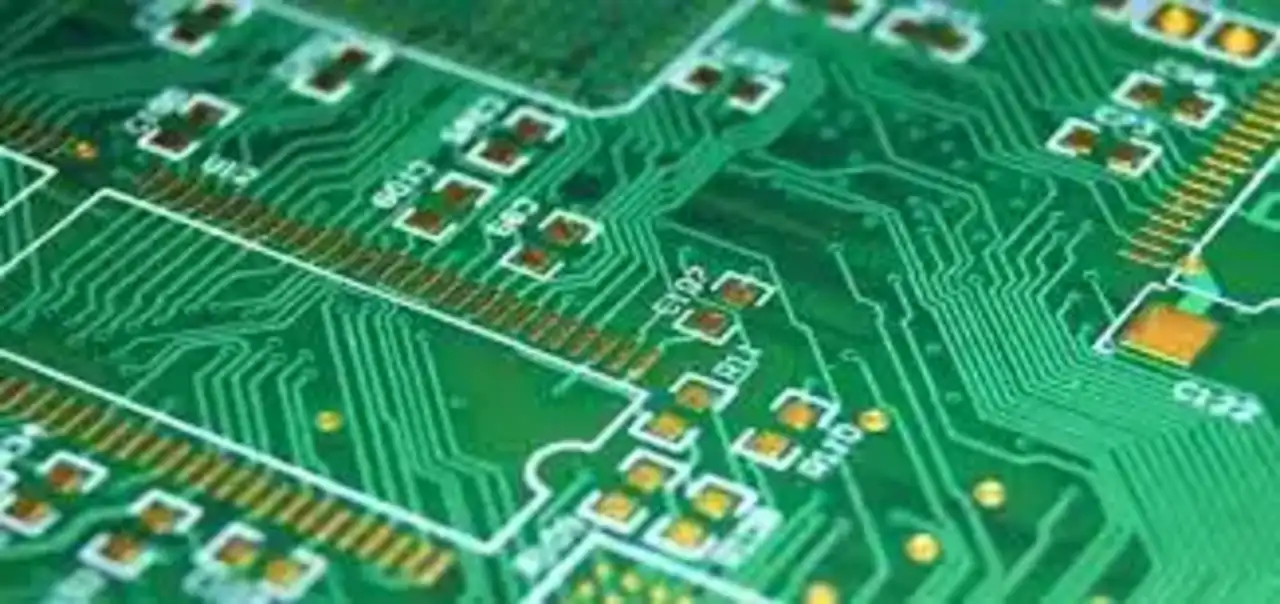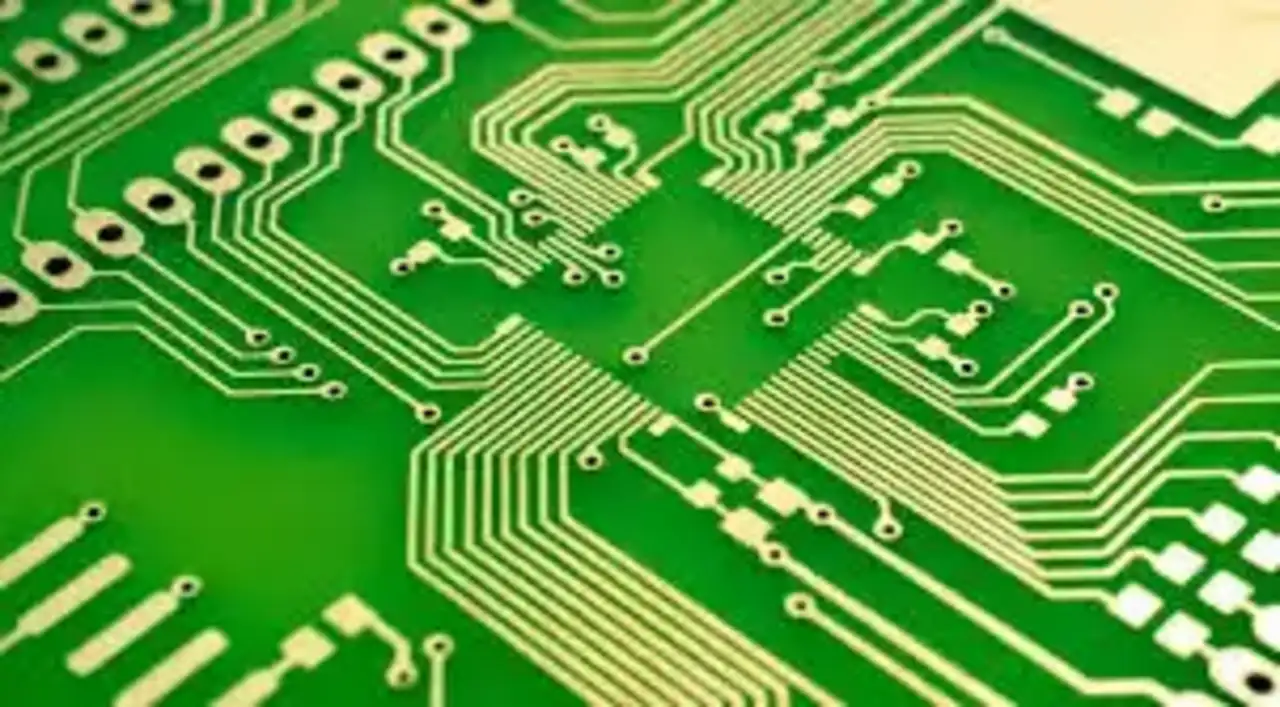Global high-mix volume high-speed Shenzhen PCBA manufacturer

Ru
9:00 -18:00, Mon. - Fri. (GMT+8)
9:00 -12:00, Sat. (GMT+8)
(Except Chinese public holidays)





Global high-mix volume high-speed Shenzhen PCBA manufacturer

Ru
9:00 -18:00, Mon. - Fri. (GMT+8)
9:00 -12:00, Sat. (GMT+8)
(Except Chinese public holidays)





HomePage > Blog > Knowledge Base > What are Circuit Boards Made of? | A Comprehensive Guide to PCB Material
The structure of the PCB board determines the range of projects and devices it is suitable for. It is based on the types of materials used in PCB that help to use boards in specific applications.
A PCB board structure has a silkscreen, solder mask, copper, and substrate. Over that, conductor layers are configured for component connections.
There are different materials used for the creation of a PCB board that define the performance, operating life, and quality of the projects where it will be used.
Here we will discuss different types of materials used for PCB boards that come with different features and that affect the specifications of boards. Let's get started.

The main components of PCB boards are listed here.
Substrate (Base Material)
Copper Layer
Solder Mask
Silkscreen
Conductive Pathway
The importance of all components of the PCB board cannot be denied, and each has its significance for the working of the PCB.

Base materials usually come with epoxy resin and are employed with a mixture of copper foil.
PCB substrates or base materials are the main components of PCB where all other PCB components are configured. It works as the base of circuits and provides essential mechanical support for components connected on board.
Different base materials have features that help to make the board reliable and perform well in connected devices. So, the proper use of base materials defines the accurate board structure performance.
Substrate materials also help to find the physical features of a board. For example, if rigid materials are used to increase board durability, then a flexible base makes the board flexible and can bend easily.
Copper layers are applied to the substrate materials. According to the types of PCB boards, copper coating is applied for single-sided boards on one side and for multiple layers of boards on more than one side.
These copper layers are used to flow electrical signals or currents between different opponents connected on boards such as transistors, diodes, inductors, etc. After getting signals from these layers, connected components perform their respective functions.

A solder mask is a protective polymer layer applied to copper layers. It is known as LPISM or liquid photo-imaginable solder mask. Its main function is to protect copper layers from interaction with each other and isolate them from causing any short circuits.
This layer also saves boards from different environmental factors, such as oxidation and solder bridge creations.

Silkscreen is a layer made with ink traces that helps to find different component connections, parts of boards, component symbolic representations, and other details of related projects.
The other name of silkscreen is the nomenclature of the board. Silkscreen is applied on the side where components are connected, but on some boards, it can be seen on the solder side.

Copper-made conductive pathways are applied to the surface of the PCB board on one or both sides, according to the design. Over the conductive pathways, a solder mask is applied, which protects conductors from any environmental factors.
There are different types of materials used for PCB board-based types of PCB and project requirements. Commonly used materials are.
FR4 stands for flame retardant, a commonly used material for PCB boards. It is a low-cost material and comes with high dielectric strength and insulation features.
FR4 is a glass-reinforced Epxoy laminate sheet, and Epxoy has weather-resistant and flame-retardant features. It also provided high tensile strength.
With its cost-effective features, it is compatible with different manufacturing processes that are preferred for board manufacturing.
The value of dissipation factors for this material is about 0.015 to 0.025, and the dielectric constant value is 4.2 to 4.8. These values can vary based on manufacturing techniques.
The glass transition temperature value of this material is 105-130 C.
High-temperature materials, also known as High Tg, are made to handle different temperature conditions. The type of material used is considered high temperature if the Tg value is higher than 150 degrees.
The most commonly used high-temperature materials for PCB boards are ceramic substrates and polyimides.
The high-temperature value for polyimide material is about 280°C to 350°C. They also have fewer thermal expansion coefficients that control delamination at the time of thermal cycling.
Aluminum and aluminum nitride are ceramic-based materials that are used to create PCBs. They have a high thermal conductivity that helps to dissipate effectively and helps to cause low heat generation from connected components on board.
The main objective of flexible materials for creation is to be used in applications where rigid boards do not provide flexible features while maintaining electrical performance. So flex materials are used in different applications, such as the aviation industry, medical devices, etc. The most common flexible material is polyester.
Polyester material, also known as Polyethylene Terephthalate (PET), creates PCBs since it provides good electrical features and is resistant to corrosion and moisture.
Metal-core PCB materials are used instead of FR4 materials for applications where good thermal features are required. These materials have features to handle heat generated while working different high-power components on board, such as LED lights that produce heat during operations for handling heating effects on PCB metal cores used.
The most commonly used metal for metal core boards is aluminum, but in some applications, copper is also used. The main use of aluminum as a substitute for copper is its low cost.
The metal core moves heat from critical connected components to low-heating areas. The surface of metalized core boards comes with conductive, thermal, and metallic substrate layers.
The main types of metal-core PCBs are
· Single-layer MCPCB
· COB MCPCB
· Double-layer MCPCB
· Double-sided MCPCB
· Multi-layers MCPCB
The main properties that must be checked before selecting PCB board materials are listed here.
The dielectric constant is a factor that defines the selected material's features to store energy in the form of an electrical field.
The value of Dk is shown in numerical form. This factor has affected board electrical performance. It defines the value of the relative permittivity of the material used for PCBs based on vacuum.
Material with a low dielectric value is used for high-frequency projects for fast signal propagation.
DK value for different materials is as follows.
· FR4: 4.2 to 4.8
· Polyimide:3.2 to 3.6
· liquid crystal polymer (LCP): 2.9.
This factor explains the electrical energy losses for material and is also known as the loss tangent. It explains the energy storage of material. This factor is considered for RF circuits. The value of the dissipation factor for FR4 materials is 0.015.
The thermal conductivity of materials is an essential factor for projects where high-power components are used.
Since it defies the capacity of materials to dissipate heat produced by connected components on board at the time of working, Watts per meter-kelvin (W/mk) is the measuring unit of this factor. It is denoted as K or TC.
It is the main factor that defines the PCB heat-dissipating features. The material that has a high TC value will dissipate more heat and provide good working for boards.
The value of thermal conductivity for aluminum is about 1 W/mK to 3 W/mK, so it has good TC features. In comparison, FR4 has a low thermal conductivity of about 0.3 W/mK, so it faces difficulty in heat dissipation.
The selected materials for PCB must have some mechanical features for proper working, such as the ability to easily handle stress conditions, flexible nature, and stiffness.
Before selecting materials, check that they can easily handle shock or vibration if they are used in applications where high pressure and mechanical forces are applied.
CTE is the coefficient of thermal expansion of materials exhibiting features when heated. The value of CTE must be in a limited range to avoid damage to materials since if materials expand rapidly with temperature rise, they will get damaged.
The ability of materials to handle electrical breakdowns is called electrical strength. The value of electrical strength is measured in volts.
The selected materials for PCB have proper heat management features since this feature is best for longer working. If selected materials are not properly dissipated, heat will affect the operations of the connected components and reduce the efficiency of devices. The best technique used for controlling the heating factor on boards is to use heat sinks or materials selected made of metal that can dissipate heat.
PCB manufacturing cost is based on selected materials for the board. The cost of materials is based on the design of the board and several layers. If there are special types of material used for board creation, that will also increase cost. The increasing number of layers in the board also makes it costlier. High-frequency materials are expensive. But try the use of good materials, which will help your project and connected devices work longer.
The manufacturing techniques are also the main factors for using good PCB material. There are two common techniques used for PCB manufacturing: through-hole or surface-mount technology (SMT). Selected materials must have compatibility with these methods so that they provide good stress management features.
PCB boards are now part of almost all industries in the world and are used to make different types of projects and devices. So, the reliability of PCBs must be maintained. For reliable and durable PCB boards, there is a need for standard and high-quality materials that can easily handle PCB requirements for special projects. Different types of materials are used in PCBs, such as FR4, which is the most common, and some others are polyimide, polyester, and some metals. Quality materials must have features to provide good thermal performance, mechanical features, and heat dissipation factors and can handle different environmental conditions such as oxidation and corrosion factors.The material must be environmentally friendly, not harmful to humans, and easily recycled. The selection of materials must be based on the requirements of the project and circuit.

Assembly Enquiry
Instant Quote